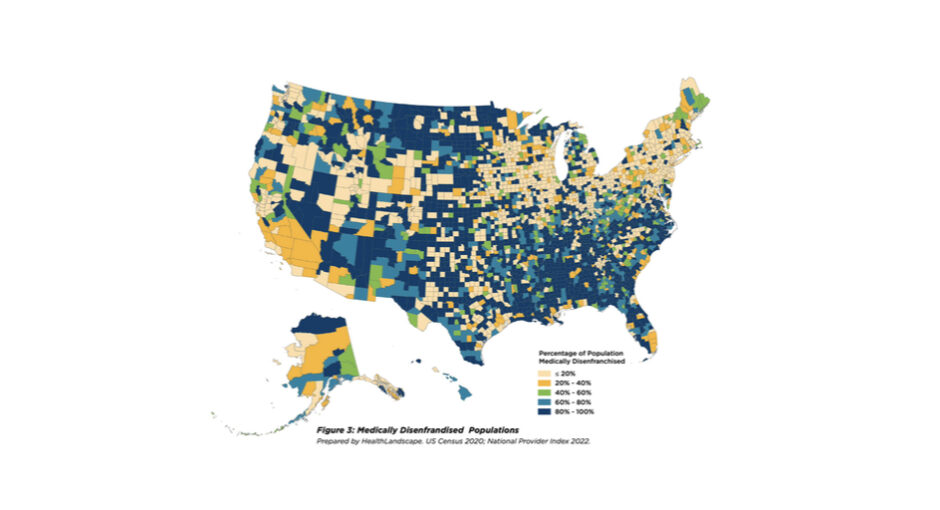More than 100 million Americans—almost one-third of the population, and many of them children—lack access to a usual source of primary care due to a shortage of providers in their community, leading to delays in care, poorer health outcomes, and wider health disparities, the National Association of Community Health Centers says in a new report.
The number of “medically disenfranchised” Americans has doubled since 2014, NACHC said. While more than half have an income below 200% of the federal poverty level, only 11% are uninsured, “demonstrating that access to a usual source of primary care requires more than having insurance,” it said.
“With sufficient resources, the health center program can expand into more underserved communities and continue to close the gap in primary care for America’s medically disenfranchised population,” the report said.
NACHC to Host 340B Day at Upcoming Annual Policy Meeting
NACHC’s annual Policy & Issues Forum will be held March 8-11 in Washington, D.C. Disproportionate share hospitals are the main buyers of 340B-priced drug by far ($34 billion in 2021) and they long have been the main voice for 340B providers. Health centers are the second largest buyers of 340B-priced drugs ($2.2 billion) and their influence in 340B is growing along with that of Ryan White clinics (about $2 billion).
Pharmacy benefit manager encroachment on 340B savings, drug manufacturer restrictions on contract pharmacies in the 340B setting, and California and New York State’s consolidation of Medicaid drug benefits under Medicaid fee for service have lifted 340B toward the top of NACHC’s policy agenda. This will be the second year that its P&I Forum includes a day entirely on 340B issues.
NACHC released the report yesterday. It is based on research NACHC commissioned from HealthLandscape, an American Academy of Family Physicians spinoff that collects and maps health care data.
“The primary care gap is deepening in underserved communities across our nation, and community health centers are vital to filling in those gaps by providing critical routine health care services,” NACHC Interim President and CEO Rachel Gonzales-Hanson said about the new report’s findings. “Expanding access to primary health care must be a national priority.”
The report found:
- Lack of access to primary care disproportionately affects people of racial and ethnic minority backgrounds.
- Thirty-one states have over 1 million medically disenfranchised people each.
- The five states with the greatest percent of medically disadvantaged residents are New Mexico, Mississippi, Delaware, Alabama, and Montana.
- The five states with the greatest number of medically disadvantaged residents are Florida, Texas, California, North Carolina, and Georgia.
- Without health centers, 15 million more patients would be at risk of not having a usual source of primary care.
- While the number of federally funded health centers has remained relatively constant since 2015, the number of clinic sites operated by these organizations has increased from less than 10,000 in 2015 to over 14,000 in 2021.
- While the federal Community Health Center fund has increased by 14% since 2015, medical care inflation has risen by 25%, leading to a 9.3% decrease in federal health center funding in real terms. Further, growth in the number of patients treated at health centers has led to a 27% decline in per-patient spending.


